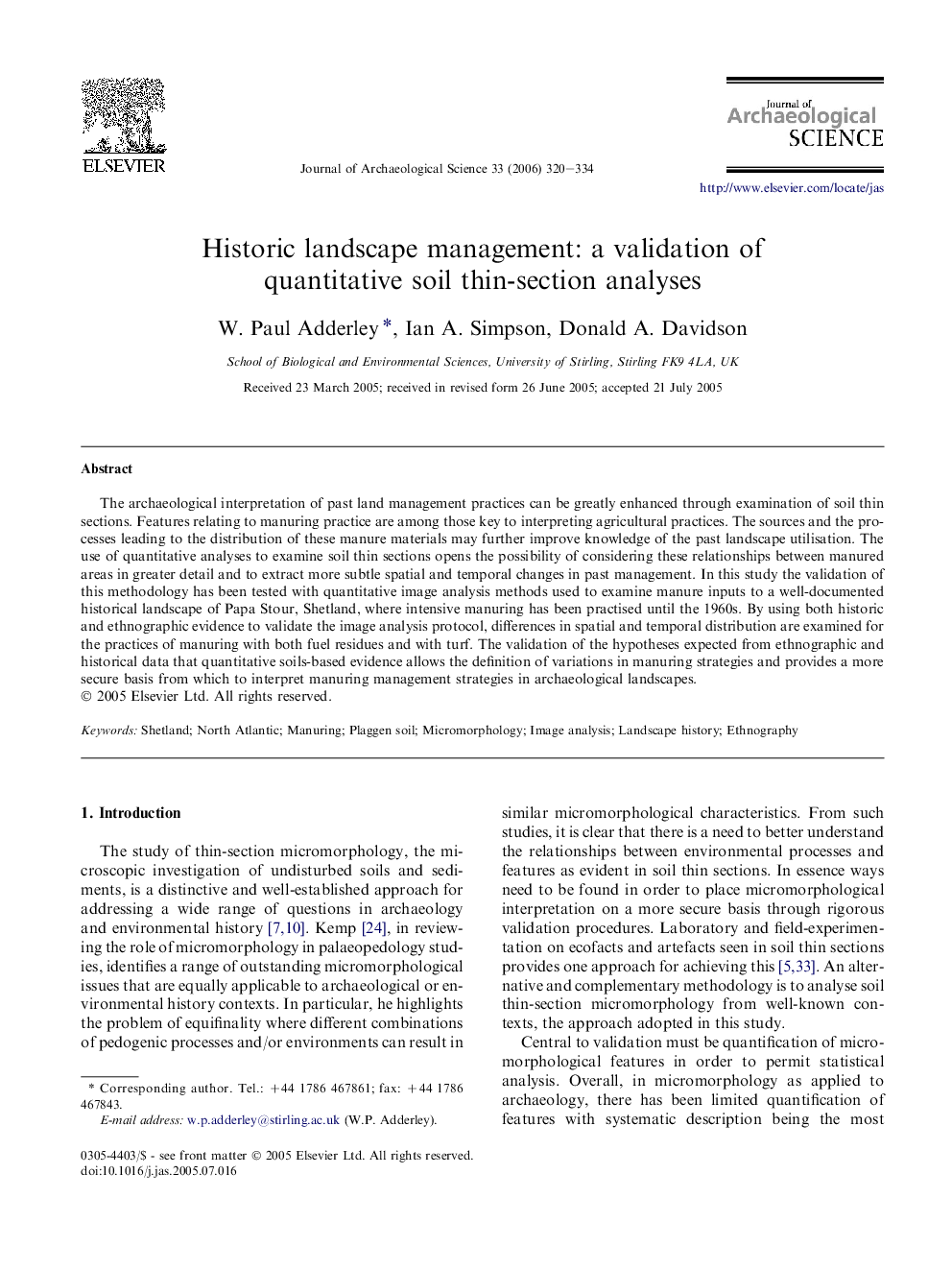| Article ID | Journal | Published Year | Pages | File Type |
|---|---|---|---|---|
| 1037704 | Journal of Archaeological Science | 2006 | 15 Pages |
The archaeological interpretation of past land management practices can be greatly enhanced through examination of soil thin sections. Features relating to manuring practice are among those key to interpreting agricultural practices. The sources and the processes leading to the distribution of these manure materials may further improve knowledge of the past landscape utilisation. The use of quantitative analyses to examine soil thin sections opens the possibility of considering these relationships between manured areas in greater detail and to extract more subtle spatial and temporal changes in past management. In this study the validation of this methodology has been tested with quantitative image analysis methods used to examine manure inputs to a well-documented historical landscape of Papa Stour, Shetland, where intensive manuring has been practised until the 1960s. By using both historic and ethnographic evidence to validate the image analysis protocol, differences in spatial and temporal distribution are examined for the practices of manuring with both fuel residues and with turf. The validation of the hypotheses expected from ethnographic and historical data that quantitative soils-based evidence allows the definition of variations in manuring strategies and provides a more secure basis from which to interpret manuring management strategies in archaeological landscapes.
